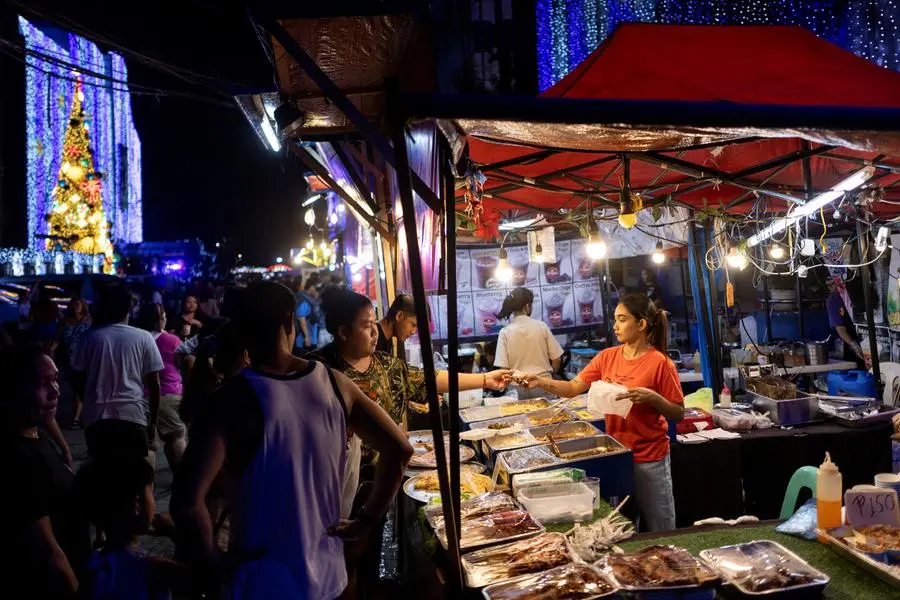PHOTO
People buy food at a Christmas outdoor market in Mandaliuyong, Metro Manila, Philippines, December 6, 2023. REUTERS/Eloisa Lopez
Consumer food service sales in the country are projected to increase by 10 percent this year, driven by the recovery of the tourism sector and an increase in consumers dining out, according to the United States Department of Agriculture (USDA).
In a report, the USDA's Foreign Agricultural Service (FAS) said it expects consumer food service sales to reach above pre-pandemic levels to $14.045 billion, higher than the $13.317 billion sales registered in 2019.
The 2024 forecast represents a 10 percent increase from the $12.768 billion recorded last year.
The USDA attributed the sales growth projection to the recovery of tourism, as well as an increase in consumers exploring new restaurant concepts and attending events.
'As restaurant franchises open stores to comply with franchise agreements, more hotels open as the tourism industry improves, further boosting consumer food service sales, especially imported ingredients,' the USDA said.
The USDA said that limited-service restaurants form 55 percent of food service offering opportunities for US ingredients, especially chicken leg quarters.
'As consumer mobility regularized, street kiosks grew faster than other segments, with opportunities in potato fries and fruit beverages,' the USDA said.
It added that coffee stores have also risen in number, leading to higher sales of roasted coffee and extracts.
Meanwhile, the report also noted that bars in the country have resumed an increase in on-premises consumption of distilled spirits and wines.
'Online deliveries continue to grow in Metro Manila and other cities as food delivery providers expand coverage and include more food establishments,' the USDA said.
With the optimistic outlook for the country's food service sector, the USDA identified several opportunities for US exporters to the Philippines.
These include the large demand for chicken leg quarters for quick service restaurants, while events and buffets in hotels also present large volume orders of imported ingredients.
It added that another opportunity to capture is from high-end restaurants and hotels featuring imported ingredients on the menu, such as US red meat and poultry, cheese, and wines, etc.
In contrast, the USDA acknowledged that elevated food inflation is a key risk in the market.
'Elevated food inflation forces other restaurants to cut down on orders or look for cheaper substitutes,' the USDA said.
Copyright © 2022 PhilSTAR Daily, Inc Provided by SyndiGate Media Inc. (Syndigate.info).























